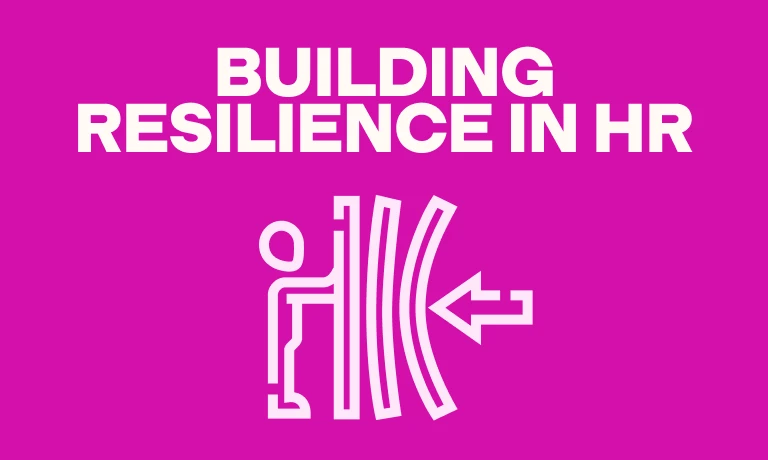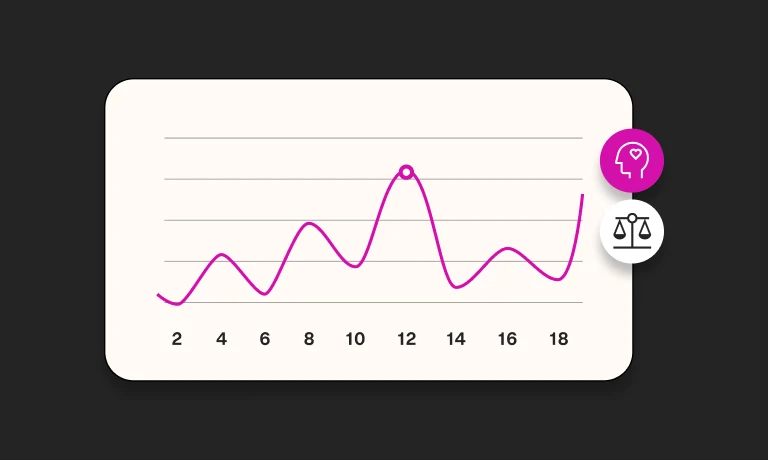A data entry clerk is critical in providing accurate and timely data for business operations.
This is why your data entry clerk job description must be precise enough to attract the right applicants. It must convey the required skills and diverse software competencies – from spreadsheets to database management.
A mis-hire in this role can lead to decreased operational efficiency, data integrity, and overall productivity, preventing the organization from reaching its goals.
In this article, we list the best practices and mistakes to avoid while creating a job description that attracts the top candidates. We also provide a template you can use to get started.
Table of contents
- What is a data entry clerk?
- Key skills to look for in data entry clerks
- How to write an effective data entry clerk job description
- Data entry clerk job description template
- 4 things to avoid when writing a job description for data entry clerks
- Next steps: Attracting and assessing data entry clerk candidates
- FAQs
- Find and hire the best data entry clerks with TestGorilla
What is a data entry clerk?
A data entry clerk is an administrative team member responsible for accurately inputting, updating, and maintaining data in computer systems. They ensure information is organized and accessible, supporting multiple business operations.
This role demands a keen eye for detail, proficiency in typing, and a solid understanding of database software to manage vast amounts of information efficiently and without errors.
Key skills to look for in data entry clerks
Here are the essential skills you should look for in data entry clerk candidates.
Hard skills:
Proficiency in data entry software: Familiarity with database software, spreadsheets (like Microsoft Excel), word processing applications, and other industry-specific software
Typing speed and accuracy: Ability to enter large volumes of information without errors
Understanding of data privacy principles: Knowledge of handling sensitive or confidential data, ensuring compliance with privacy laws and organizational policies
Knowledge of databases: Ability to navigate, search, and input data effectively
Data verification skills: Ability to review, verify, and correct data entry errors to maintain the integrity of the information
Soft skills:
Attention to detail for ensuring the correctness of entered data and spotting errors or inconsistencies
Organizational skills for managing tasks smoothly, prioritizing work, and maintaining organized records
Communication skills (verbal and written) for understanding instructions and clarifying information
Problem-solving abilities for identifying issues with data or processes and developing solutions
Adaptability for learning new software or data entry methods as required
The best insights on HR and recruitment, delivered to your inbox.
Biweekly updates. No spam. Unsubscribe any time.
How to write an effective data entry clerk job description
Here are four best practices to ensure your data entry clerk job description is compelling and precise.
Mention accuracy and speed requirements
Note the expected typing speed (for example, words per minute) and the accuracy rate required. Providing specific benchmarks helps applicants assess their abilities and gives recruiters a clear way to measure skills.
For example, you might say that "candidates should possess a typing speed of at least 60 words per minute with a 98% accuracy rate."
Specify data types and language requirements
Identify the types of data the clerk will be working with, which could include customer information, invoices, or inventory records. This will enable candidates to assess their own suitability for the role based on their experience and comfort with these data types.
For example, you might say, "The role primarily involves entry and verification of financial data, including invoices and purchase orders."
If the job requires proficiency in specific languages due to the nature of the data or the geographic location of the clientele, mention this in the description.
For example, some job descriptions might say, "Fluency in Spanish and English is required for accurately processing and entering bilingual customer data."
Detail software proficiency
To draw in candidates with the software proficiency you need, list the specific preferred or required software tools and platforms. These might include database software, CRM systems, and Microsoft Office – especially Excel and Access.
Be explicit about the level of proficiency needed. For example, if the position requires advanced Excel proficiency, say that.
Include a realistic job preview
Offer a brief overview of the daily tasks and challenges the data entry clerk might face. This helps set realistic expectations for potential candidates so that there are no mis-matched ideas about the role.
Also, note who the data entry clerk will report to and how their performance will be evaluated. You might say, for example, that "the data entry clerk will report directly to the Data Management Supervisor and will have monthly performance reviews focusing on accuracy and efficiency."
Data entry clerk job description template
Below is a template for the data entry clerk position you can customize to meet your company’s needs.
Company introduction
Provide a company overview that includes your products and services, work culture, mission, and recent achievements to showcase your position as an industry leader.
Emphasize qualities that make your company more attractive to top talent. For example, do you have an innovative, supportive work environment that values growth? If so, say that.
Benefits of working with [your company]
Write down all the significant benefits for employees at your company. Examples include:
Performance bonuses
Robust training programs
Flexible working hours
Focus on work-life balance
Add benefits that will appeal to data entry clerks, like professional development courses and opportunities for career advancement. This will help give you an edge over competitors hiring for the same role.
Data entry clerk job brief
[Company name]
Job title: Data Entry Clerk
Reports to: [For example, Data Management Supervisor or Data Operations Manager]
Position type: [Full-time or part-time]
Location: [For example, remote, hybrid, or on site (include address if applicable)]
Salary and benefits: [For example, competitive salary range, along with benefits details that include healthcare, paid time off, and more]
Responsibilities and duties
Accurately enter and update data in our company database, ensuring timely and error-free processing.
Verify and validate data entry through cross-referencing to maintain the integrity of the database.
Collaborate with team members to identify and rectify data discrepancies.
Adhere to data confidentiality and security protocols, safeguarding sensitive information.
Participate in training sessions to stay updated on database management systems and procedures.
Skills and qualifications
Required skills and experience
Proficient in data entry software and MS Office, especially Excel
Typing speed of [number/minute] with high accuracy
Experience with [industry-specific software]
Strong understanding of data privacy standards
Ability to manage large datasets without compromising accuracy or quality
Preferred skills and experience
Proven experience as a data entry clerk or similar role
Advanced Excel skills
Experience with CRM and database management systems
Knowledge of industry-specific data protocols
Bilingual abilities [specify languages if applicable]
Basic understanding of data analysis techniques and tools
4 things to avoid when writing a job description for data entry clerks
When crafting a data entry clerk job description, avoid these common errors that can deter qualified candidates or misrepresent the role.
1. Overlooking the specific nature of data handling
Data entry roles vary greatly depending on the industry, company size, and specific project needs. Tailor your description to reflect the unique aspects of the role within your organization. This clarity helps candidates determine if their skills align with your needs.
For example, does the role primarily deal with numerical data and require high precision? Or does it involve textual data entry and require clerks to understand context and nuances?
2. Overloading with job duties
While data entry clerks often wear multiple hats, listing an unrealistic number of responsibilities can overwhelm potential candidates. Focus on the core duties in the primary parts of your job description and mention any essential additional tasks in a separate section lower down.
3. Underestimating soft skills
Not highlighting the importance of soft skills can lead to applications from candidates who lack crucial abilities – like attention to detail and effective communication. These skills are as essential as technical proficiencies for data entry clerks to perform well.
4. Failing to communicate company culture
Candidates today value understanding the work environment and company culture. For a data entry clerk position, clarify not just the tasks but also the team dynamics, reporting structure, and flexibility offered.
If your company promotes work-life balance through flexible scheduling or remote work options, highlight these aspects to draw in top candidates.
Next steps: Attracting and assessing data entry clerk candidates
After writing and posting your job description, focus on finding the best applicants. To assess your applicants effectively and without bias, you can use talent assessments.
TestGorilla is a talent assessment platform with hundreds of tests for a skills-based hiring approach. Here are some role-specific skills tests for the data entry clerk role:
Typing Speed (Lowercase): Measures candidates' typing speed in words per minute
10-Key Typing (Numbers Only): Evaluates candidates' ability to accurately enter numerical data using the ten keys on a keyboard's numeric pad
Working with Data test: Focuses on a candidate's proficiency in performing basic data analysis and interpretation
Microsoft Excel (Advanced) test: Covers skills like data organization and using advanced formulas and features
Problem Solving test: Assesses candidates' ability to analyze data and textual information to identify and respond to problems
Create personalized assessments by combining up to five tests. You can also add other tests, like our Culture Add test, cognitive ability tests, and more to get a more holistic understanding of each candidate. You can even add custom questions to each test. This way, you can create the perfect assessment to enhance your search for a data entry clerk.
FAQs
Are data entry clerks in demand?
With the rapid growth of digital data, companies need data entry clerks to digitize records and efficiently manage data. Automation and AI technologies have changed the nature of data entry clerks’ tasks. But this has created more opportunities for data entry roles revolving around data verification and management.
What are the salary expectations for a data entry clerk?
Salary expectations for a data entry clerk vary by region, industry, and experience level. According to Indeed, as of February 2024, the average base pay for a data entry clerk in the US is estimated to be $18.35 per hour.
Find and hire the best data entry clerks with TestGorilla
A well-crafted data entry clerk job description can help you attract strong candidates to your role. Ensure it accurately reflects the role’s responsibilities and skills, and use it to compel candidates to apply.
You can use TestGorilla's tests to create custom talent assessments to evaluate your applicants. This makes finding the right data entry clerk a breeze.
Curious to learn more? Book a live demo or sign up for a free account.
You've scrolled this far
Why not try TestGorilla for free, and see what happens when you put skills first.














